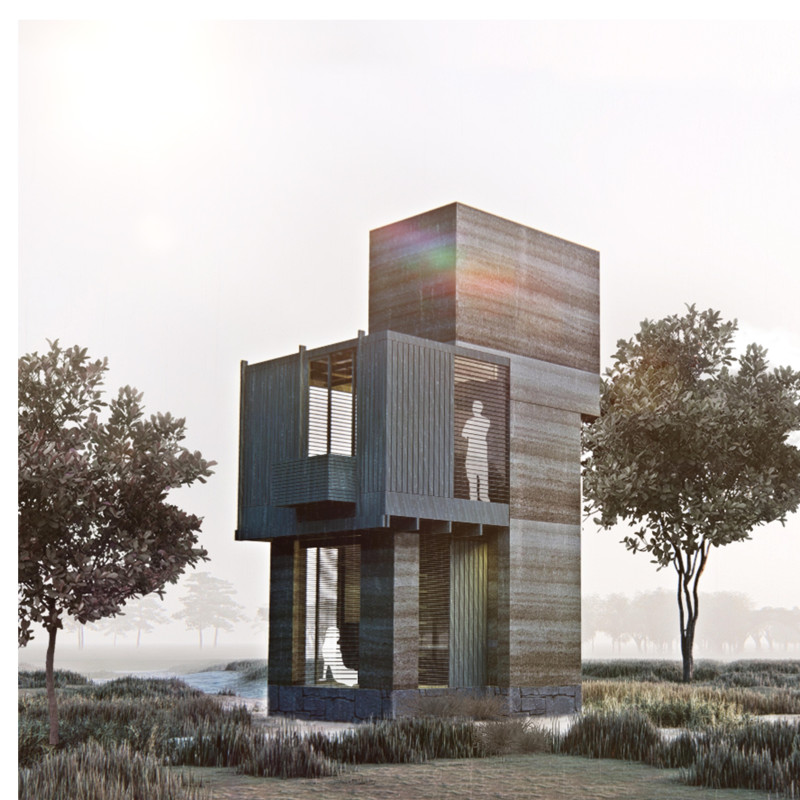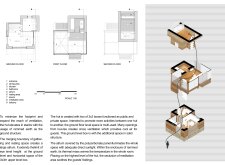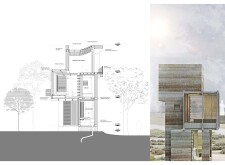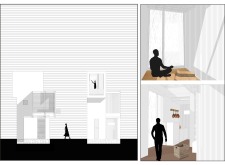5 key facts about this project
The hut features a modular construction approach, with two primary units stacked to optimize space and encourage natural ventilation. This design allows for open living arrangements on the ground floor, where communal areas such as the kitchen and dining space are situated. The second floor provides private areas designated for meditation and rest, ensuring a quiet retreat from daily life. Large windows and an atrium further enhance natural light and airflow, fostering a comfortable interior environment.
Material selection is paramount in this project. It employs rammed earth for its thermal mass and insulation properties, promoting energy efficiency. The use of wood for structural elements adds warmth, while locally sourced stone forms a durable foundation, binding the structure to its geographical context. The polycarbonate panels used in the roofing allow for light penetration without sacrificing insulation, merging modern elements with traditional construction techniques.
Innovative Design Elements
The architectural design prioritizes passive strategies to mitigate environmental impact. Cross ventilation is a key feature, designed through multiple openings and louvered panels, cooling the interior naturally without reliance on mechanical systems. This not only reduces energy costs but also aligns with sustainable practices within architecture.
Unique to this project is the focus on communal and individual spaces. The integration of an atrium facilitates interaction among occupants, while distinct areas for meditation cater to personal rejuvenation. The design balance between community and solitude reflects a thoughtful consideration of user experience.
Functional Layout and Usability
The layout of "Therapy Stone" is strategic in fostering functionality without compromising aesthetics. The ground floor’s open-plan design encourages social engagement, suitable for gatherings or family activities. In contrast, the upper floor is designed to offer tranquility, providing serene views of the landscape. The balcony extends outdoor space, allowing occupants to engage with the natural environment directly.
The architectural ideas presented in this project can serve as a model for future developments that seek to integrate sustainable living with traditional building practices. By focusing on resilience and community interaction, "Therapy Stone" offers practical solutions to contemporary architectural challenges.
For a detailed view of the architectural plans, sections, and design concepts, interested readers are encouraged to explore the project presentation further to gain deeper insights into its unique attributes and innovative designs.


























